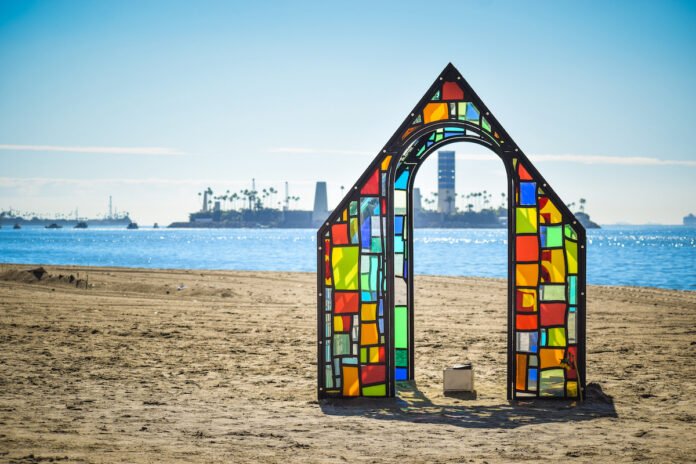My ongoing series, Long Beach Lost, was launched to examine buildings, spaces, and cultural happenings that have largely been erased, including the forgotten tales attached to existing places and things. This is not a preservationist series but rather a historical series that will help keep a record of our architectural, cultural, and spatial history.
Editor’s note: This series first appeared on Longbeachize in 2017 and 2018; some articles have been republished, updated, and/or altered.
“It’s a sign of hope, in its true sense, bringing light and love—and how can you not appreciate that?” These were the words describing Tom Fruin’s 2019 sculpture Camouflage House. And they came from Cassy Leeman of Long Beach Walls (then called POW! WOW! Long Beach) when she stood in front of the sculpture on the last day it stood on the sands of Long Beach before being hauled to Descano Gardens in the morning on Oct. 5, 2021.


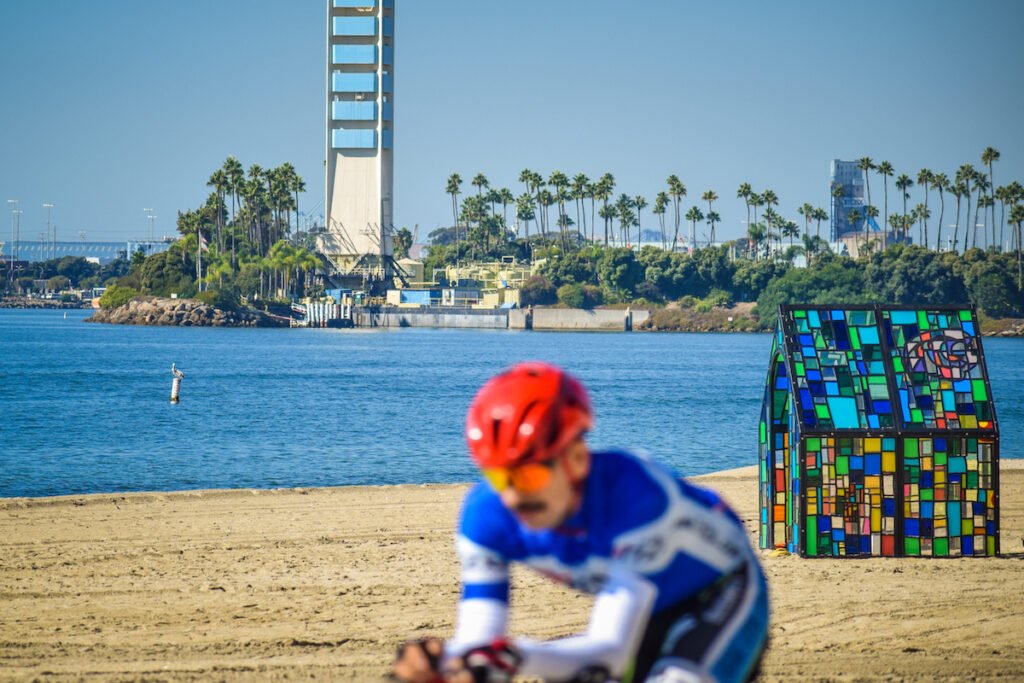
How did the ‘Camouflage House’ end up on the beach?
An extension of Long Beach Walls’s sculptural arm, Art Renzei, the glass house was that year’s most popular attraction, greeting beach-going passersby since it landed on the shore with its sun-drenched, colorful reflections shining onto the sand in the day and, thanks to some powerful lights inside, light up during the night as the perfect forefront to the Long Beach skyline.
Echoing Leeman’s sentiments, the reason for its popularity is quite simple.
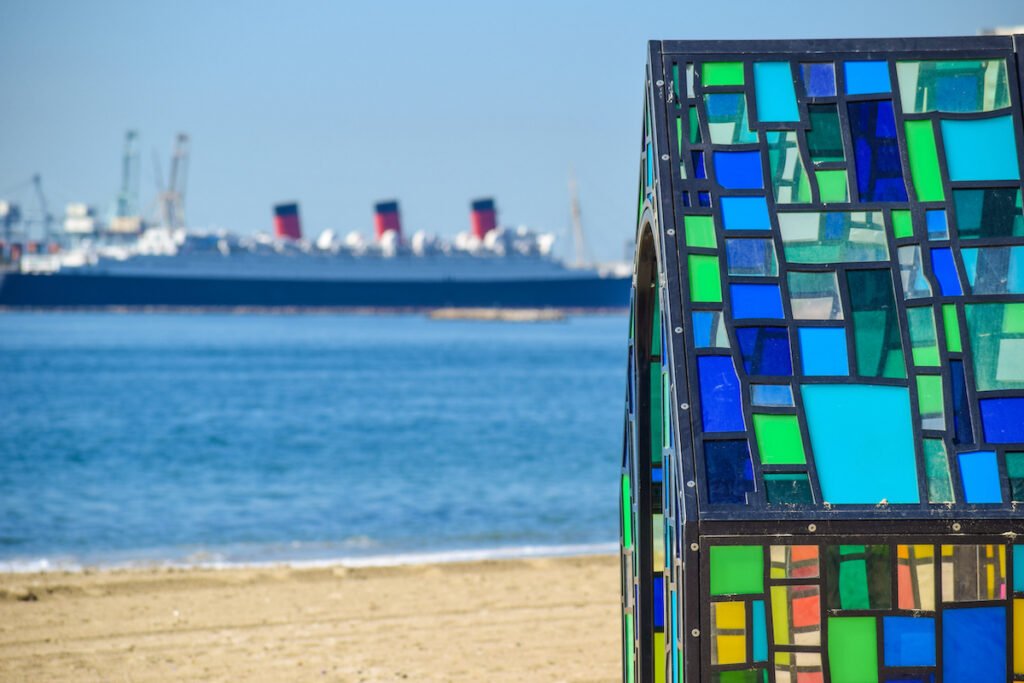
At its base, the glass house was something that was much needed in the pandemic: a simple breath of beauty, an escape from whatever political woes may be stretching you too thin, a way to take in the light of the sun in a colorfully unique way.
It frames the THUMS oil islands and the Queen Mary in distinct ways while giving everyone who passes it a moment to pause. Within a 15-minute span, one can see nearly every single walker (and the occasional bicyclist) stop, step off the path, and come closer.
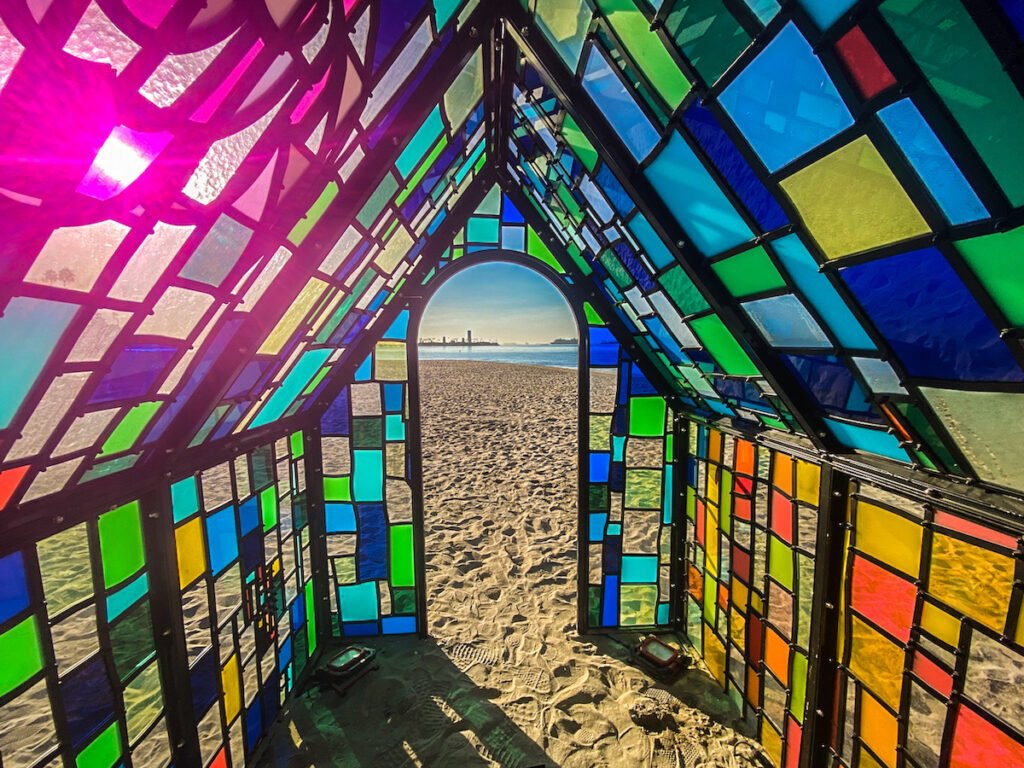
At its base, the glass house is something much needed in the pandemic: a simple breath of beauty, an escape from whatever political woes may be stretching you too thin.
This isn’t to say the piece lacks a political perspective—particularly given it was a house on a space of land that is often used by the unhoused as a place of respite.

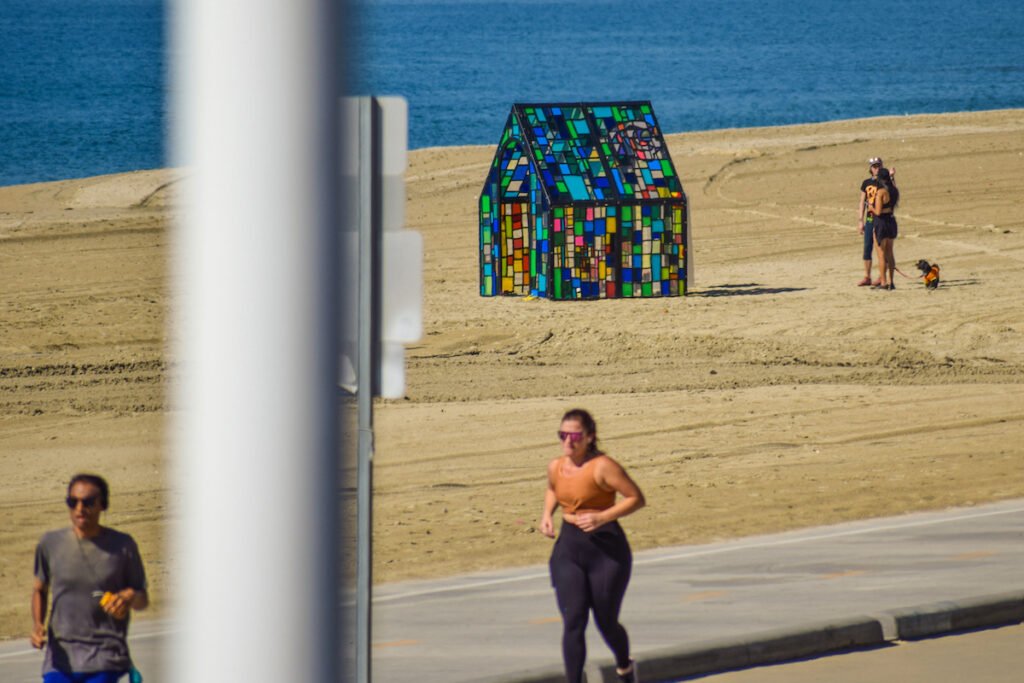

The sculpture was constructed from collected trash by Fruin, a UC Santa Barbara graduate who fled to New York City to find colorful, discarded bits of plexiglass in the streets, gutters, and trash bins of the city.
While the easy explanation is that one man’s trash is another treasures, the real treasure of the sculpture was the way in which it simultaneously expresses its origins as debris and its rebirth as a technicolor sun dwelling.
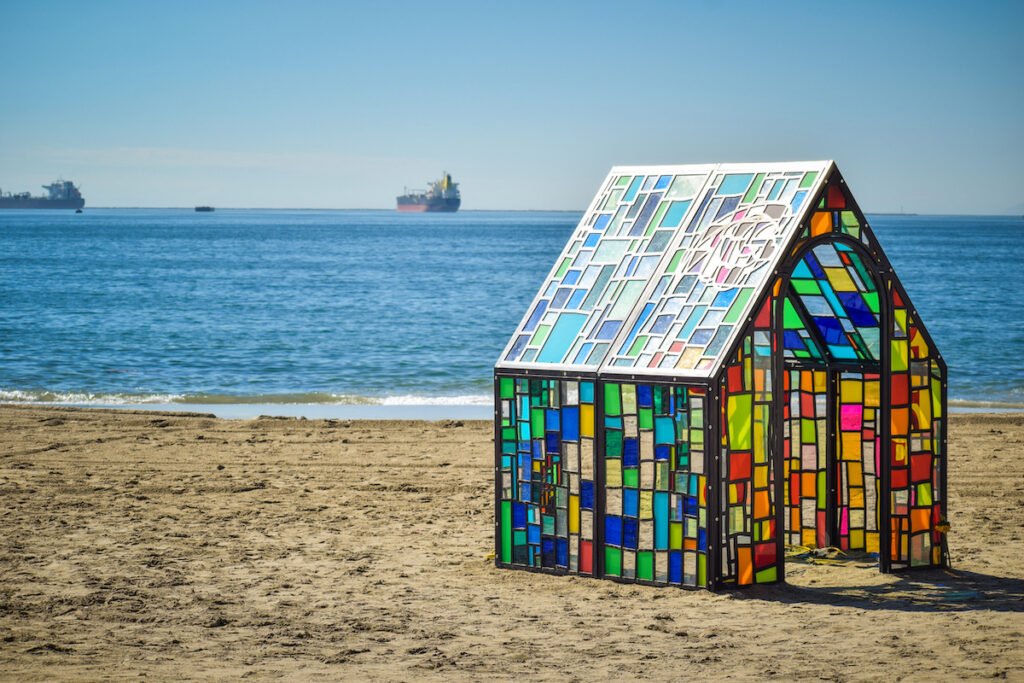
From afar, the house’s lines were seemingly perfect, straight edges but, as one got closer, the incongruent shapes and lines highlight and frame the imperfection of the colored pieces. The result? A stunningly escapist piece of art that is sadly gone but beautifully ephemeral in the history of Long Beach’s art scene.
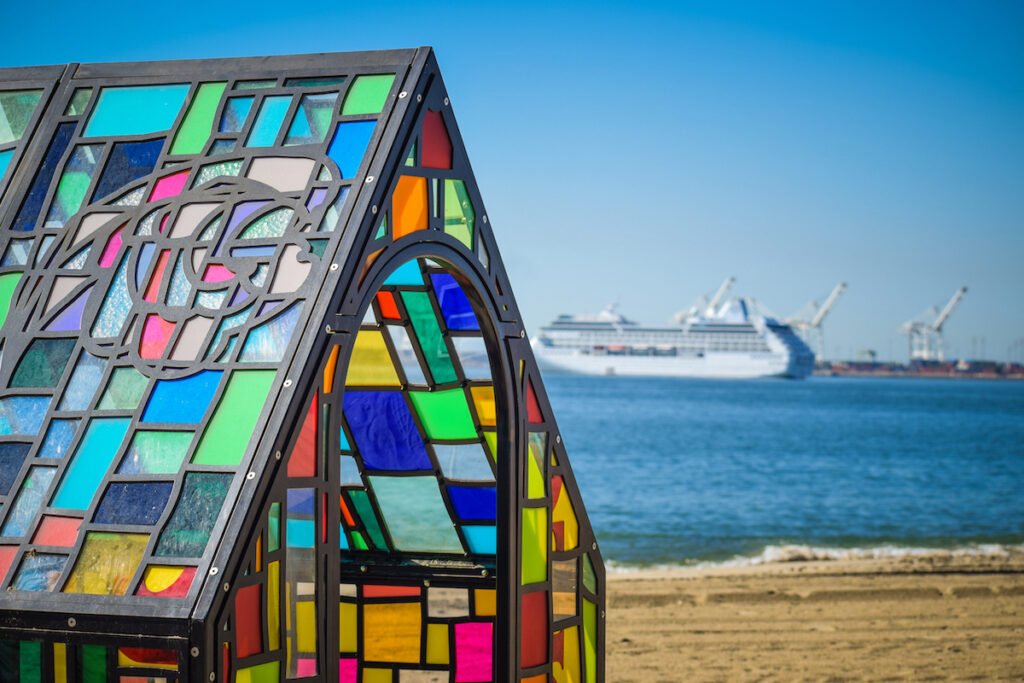

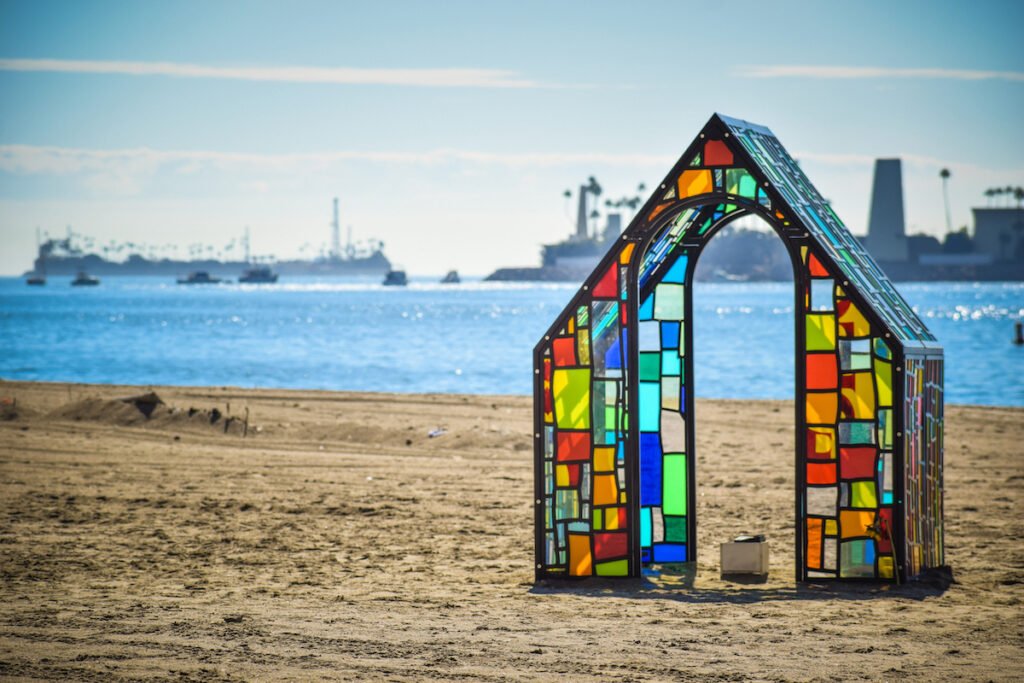
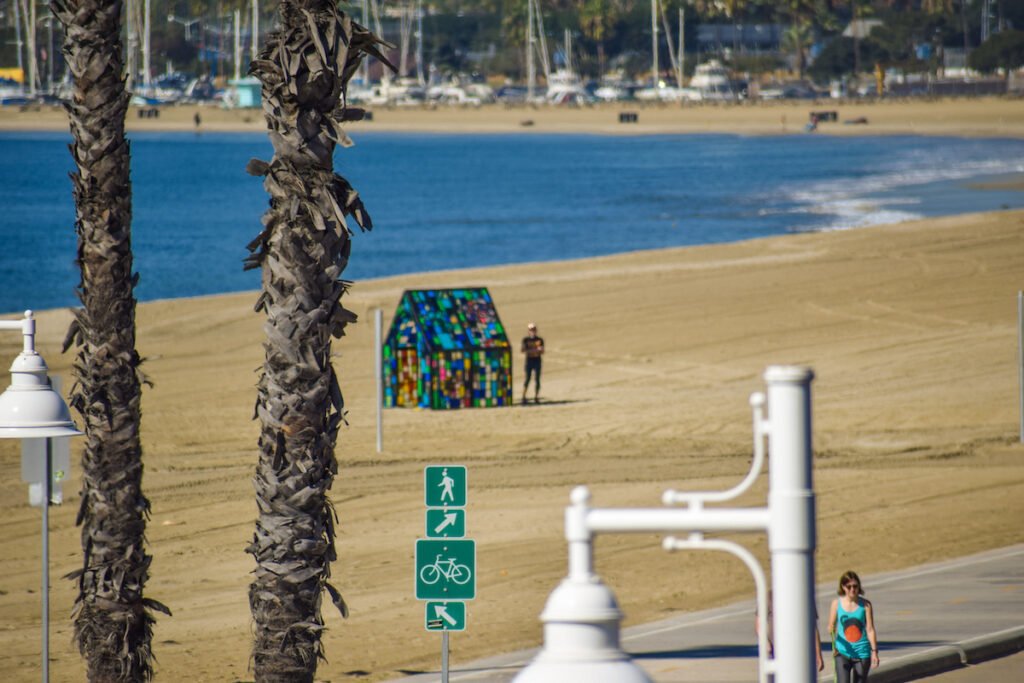
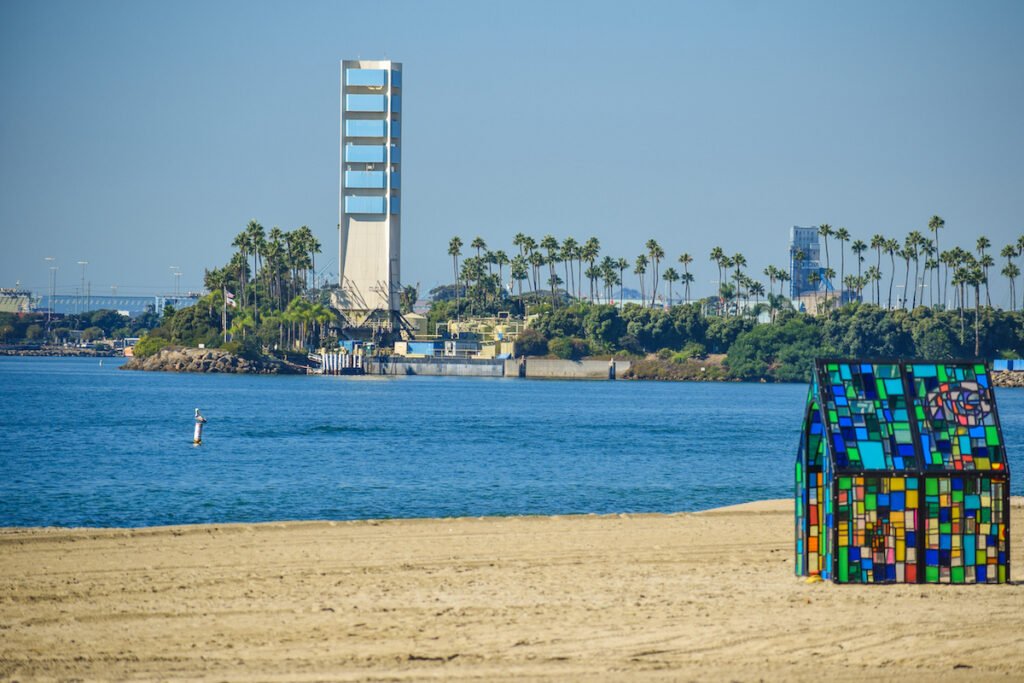
Has there been anything like the ‘Camouflage House’ since?
Oh yeah: Long Beach Walls (and Art Renzei) have long been invested in the world of sculpture and its temporary use within the art landscape of the city.
2023 alone proved one its most dense in terms of sculpture: There was the witty, playful, and delightfully “meant for everyone” artist that was Andrew “Balloonski” Mika, who created massive balloon sculptures throughout the city.
Crystal Wagner took over the façade of the historic Psychic Temple building on Broadway in Downtown Long Beach.
James Shen—one of the founding principals of the influential People’s Architecture Office in China, the first architecture firm in Asia to be a certified B-Corporation—partnered with Jennifer Tran on a temporary installation at Lincoln Park.
And for the future? “We will always be invested in sculpture and bringing pieces that would otherwise not be seen in Long Beach,” Leeman said.
Bring on the art.

